More than Just Another Suburb: How Small Communities Can Grow Without Losing Their Soul
Small communities hold a special place in our hearts. They’re often defined by what they’re not: not big cities with their endless traffic, towering buildings, and impersonal rush. We cherish their local businesses, historic downtowns, and the simple joy of neighbors knowing and trusting each other, whether at the store or walking the dog. Crucially, they offer a place where children can roam freely and safely, and nature is always within reach.

But what if everything we love about small communities is at risk?
An Identity Crisis on the Horizon
Many small towns are facing an “identity crisis”. Our historic main streets, once vibrant centers of commerce, are increasingly giving way to suburban big box stores, diminishing opportunities for those chance encounters that build community. The sprawling nature of new developments, characterized by large driveways and a lack of sidewalks, makes it more challenging to engage in casual conversations with neighbors. And as traffic concerns mount, children are kept indoors, their freedom to play safely in the community curtailed, leading our towns to look increasingly like “just another big city’s suburb”.
The central challenge is clear: How can small communities grow and accommodate changing demographics without simply becoming “just another suburb”? How can they reinvent themselves by embracing traditional values such as vibrant main streets, a strong sense of community, and children’s independence, all while expanding?
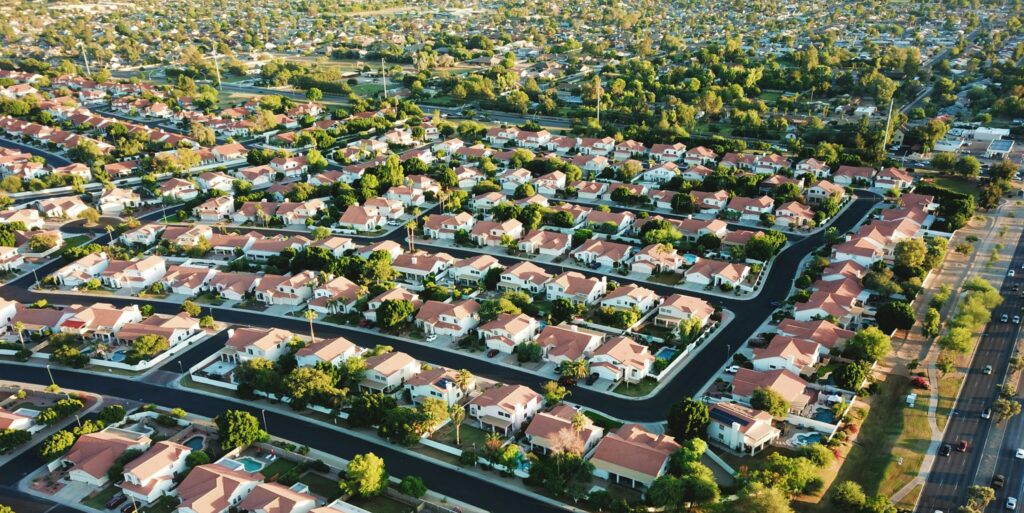
Looking Across the Pond: Inspiration from the Netherlands
To find answers, we can look to places where small towns thrive, where, despite 21st-century pressures, main streets are vibrant, neighbors connect, and children enjoy the independence to cycle to school or friends’ houses. We’re not talking about bustling metropolises like Amsterdam, but smaller Dutch towns where walking, cycling, and vibrant public spaces are simply part of life. In the Netherlands, 48% of youngsters‘ trips are made by bicycle*, with many cycling an average of 25 minutes per day, and many children travel independently. Drivers are also among the happiest in the world, thanks to well-designed car networks.
Consider these examples:
- Hoogerheide (9,000 inhabitants): This town demonstrates the power of proximity. Schools and services were strategically planned in a central location, enabling residents to walk and cycle to supermarkets, shops, restaurants, and dentists, thanks to safe streets and network planning.
- Gouda (70,000 inhabitants): Known for its cheese, Gouda exemplifies spatial and network planning. Car traffic is directed to arterial roads, and visitors are encouraged to park at the edge of the historic town center, making the town center a place people want to be, not just drive through. A remarkable 80% of urban streets in Gouda have a 30 km/h speed limit and no dedicated cycle infrastructure, accommodating on-street cycling and making street crossing easier.
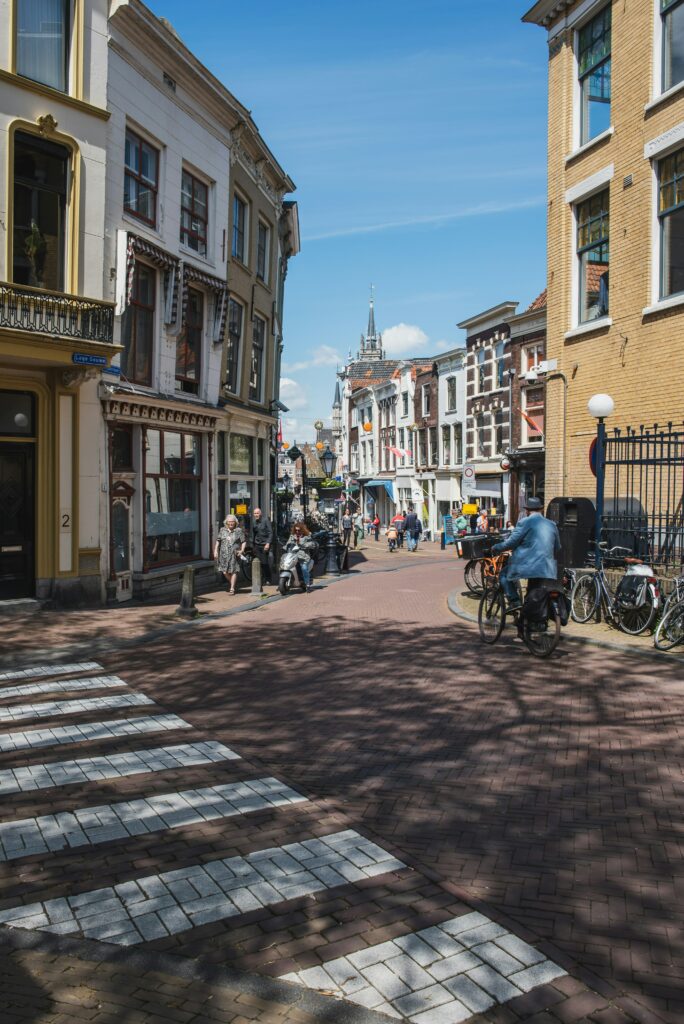
- Haren (18,000 inhabitants): Haren transformed its main shopping street. Once prioritizing through car traffic, it was reclassified to focus on local trips, with widened sidewalks, trees, pavers, and no traffic signals. While still car-accessible, it’s now far more attractive for pedestrians and cyclists.
Homegrown Solutions: Canadian Towns Leading the Way
The lessons aren’t limited to Europe. Canadian communities are also innovating to preserve their unique character:
- Canmore, AB (16,000 population): A rapidly growing tourist destination in the Rockies, Canmore faced significant conflict between “place and flow” on its Main Street. By 2023, the Town turned Main Street into an “Activity Street,” largely free of private vehicles (except in winter). This required a multi-pronged approach, including reorganizing the road network to separate flow and place, updating street design standards to prioritize active transportation, reconstructing roads to add cycle tracks, and redesigning local streets to limit speeds. Policy measures like paid visitor parking, free transit, 30 km/h speed limits on local streets, and zoning for intensification supported this shift to more space-efficient modes.
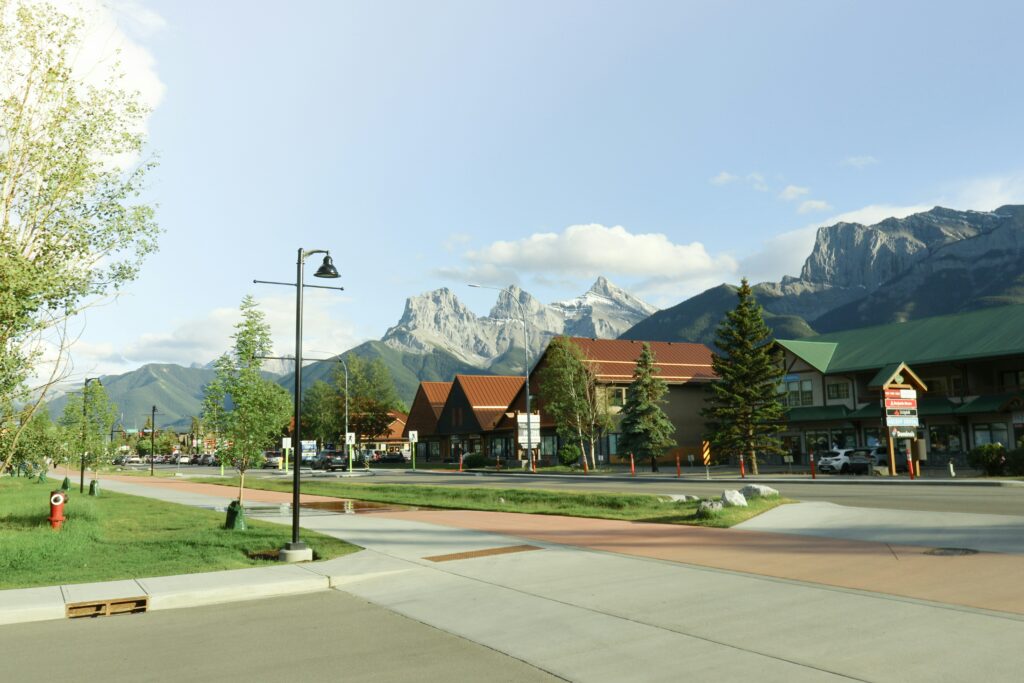
- Peterborough, ON (88,000 population): Its Bethune Street, inspired by other innovative cities, demonstrates a high degree of traffic calming and restricts motorists at various points, creating significant public space improvements and a bicycle-priority street.
- Russell, ON (20,000 population): This township converted an old rail trail into a 3-meter-wide paved path, connecting two towns 5km apart. This rail-to-trail conversion added high-quality crossings and parking at access points, proving highly popular with users of all ages for walking and cycling. New developments are now integrating connections, extending the trail through on-street segments to a community center, fostering community connection and growth.
The Keys to Success: Building a Future with Soul
So, what are the meaningful steps small communities can take to maintain their identity while accommodating growth?
- Consider your community’s mobility values: What defines your community’s approach to movement? Values like Identity (a distinctive character), Autonomy (freedom to travel as one chooses), Equity (access for all), Safety (infrastructure designed for everyone), and Pride (high-quality, innovative systems) can guide your decisions.
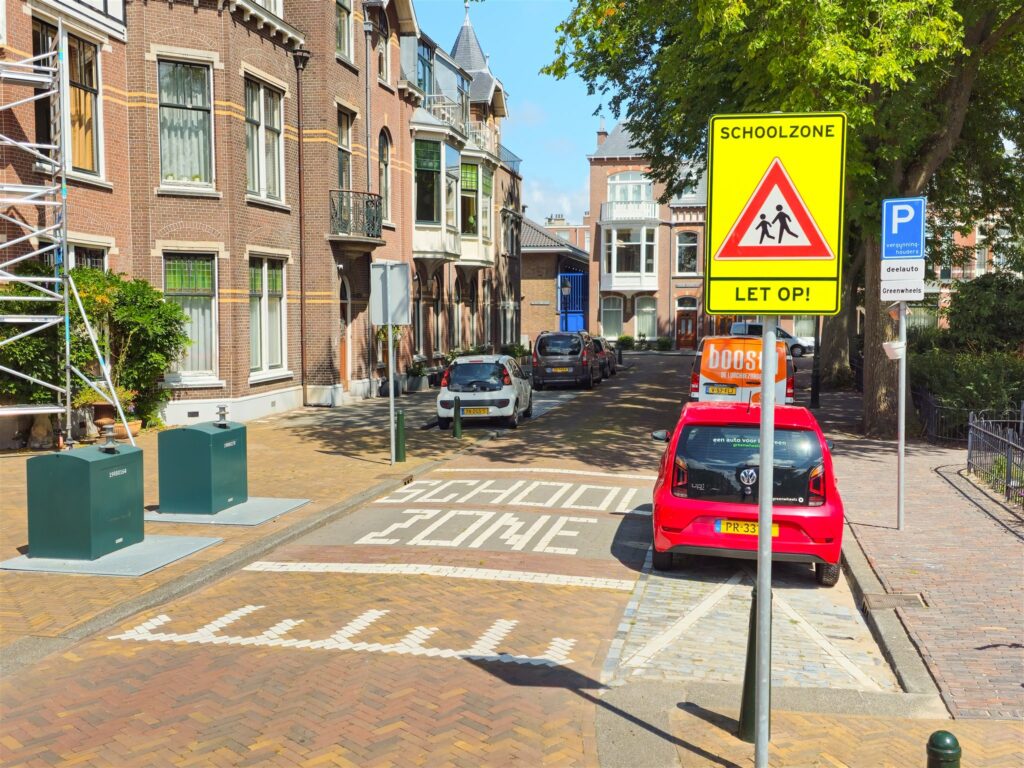
- Think about outcomes: What do you really want for your community, including children and older adults? It may be unrealistic to expect people to give up their cars, but what about enabling kids to walk to school and giving older adults opportunities to socialize and be active?
- Integrate plans and strategies: Small towns have the advantage of being nimble and able to work across departments more effectively. Rather than developing separate (and costly) plans for active transportation, traffic calming, road safety, and Complete Streets, integrate these into a single plan and workstream that aligns with your community’s growth plans.
- Prioritize network-level safety: Keep heavy traffic away from sensitive areas and bustling town centers. Create main streets that are destinations, not just thoroughfares.
- Think differently about local streets: Design them for very low traffic speeds, to be safe for play and socializing. Use temporary materials to quickly and cost-effectively make these changes on existing streets.
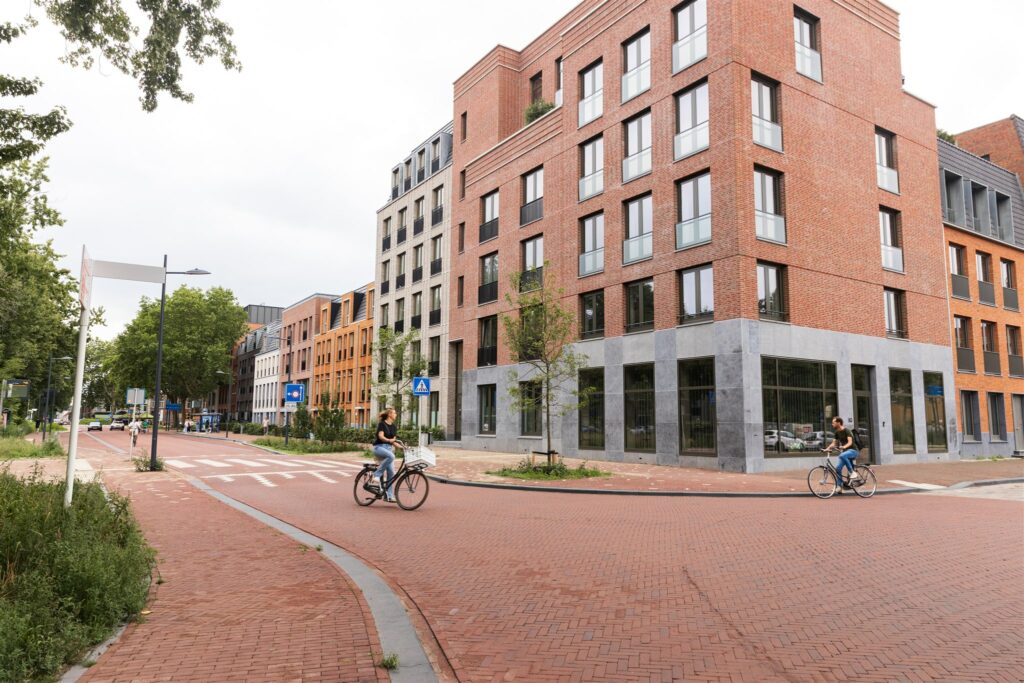
- Plan for walking and cycling with all new development: Plan facilities so that residents of new edge-of-town developments can easily walk or bike to the town center and other amenities like community centres and schools.
Small communities don’t have to be swallowed up by expanding cities or become indistinguishable suburbs. By strategically reinventing themselves, focusing on people-centered design, and embracing a holistic vision for mobility, they can grow while nurturing the very qualities that make them unique and beloved.
What values will guide your community’s journey?
This blog post is based on insights from the “Small Municipalities: How can they grow without increasing car-dependency?” presentation by Mobycon.

